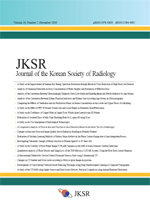건물 저층과 고층에서 환기와 공기정화 식물을 통한 라돈 농도의 비교
Comparing the Effects of Ventilation and Air Purification Plants on Radon Concentration in the Lower and Upper Floors of a Building
- 한국방사선학회
- 한국방사선학회 논문지
- 제14권 제7호
-
2020.12881 - 889 (9 pages)
-
DOI : 10.7742/jksr.2020.14.7.881
- 68

본 연구는 건물의 저층과 고층에서 환기와 공기정화 식물을 통한 라돈의 농도 변화를 정량적으로 측정하고자 하였다. 건물의 저층과 고층에서 라돈 농도 측정을 위해 시간을 설정하고 라돈 측정기를 이용하여 실내를 폐쇄 했을 때와 환기, 공기정화식물을 배치했을 때의 라돈 농도를 각각 측정하여 비교하였다. 폐쇄, 환기, 공기정화식물 배치에 따라 라돈 농도 변화에 유의한 차이를 보이는지 검증하고자 일원배치 분산분석(One-way ANOVA)를 시행하였다. 실험 결과 건물의 저층과 고층에서 환기와 공기정화식물 배치를 통한 라돈 농도의 감소는 통계적으로 유의한 차이를 보였으며, 환기와 공기정화식물을 배치 했을 때에는 통계적으로 유의한 차이점을 나타내지 않았다. 따라서 건물내 환기 뿐만 아니라 공기정화식물을 적절히 활용하면 라돈 농도를 효과적으로 감소시킬 수 있을 것으로 사료된다.
The objective of this study was to quantitatively measure the changes in radon concentration due to ventilation and air purification plants in the lower and upper floors of a building. This study measured and compared radon concentration in the lower and upper floors of the building by using a radon meter when the room was closed, it was ventilated, and air purification plants were installed at a specific time. One-way ANOVA was conducted to evaluate the effect of treatment (i.e., closure, ventilation, and air purification plants) on radon concentration. The results of this study showed that ventilation and air purification plants significantly decreased radon concentration in the lower and upper floors of the building, but the effect of ventilation and that of air purification plants were not significantly different. Therefore, it will be possible to reduce radon concentration effectively when ventilation and air purification plants are used appropriately.
Ⅰ. INTRODUCTION
Ⅱ. MATERIAL AND METHODS
Ⅲ. RESULTS
Ⅳ. DISCUSSIONS
Ⅴ. CONCLUSIONS
Reference
(0)
(0)